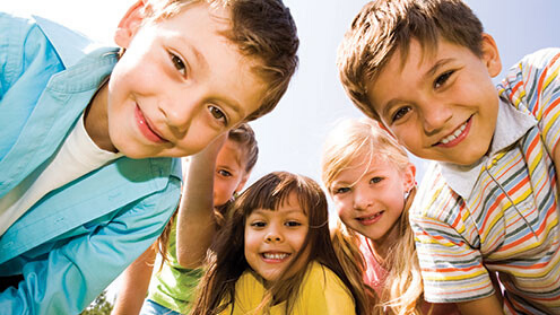Over the past few years, kids across the country have slowly become less and less active. According to a recent report from the World Health Organisation, a staggering 85% of UK children don’t get enough exercise. This makes it more important than ever before for schools to encourage their pupils to get out and get active.
This lack of exercise is having a real impact on the nation’s health. Not only are children becoming increasingly overweight, kids who don’t have the chance to work off their energy during the school day can struggle to concentrate in the classroom.
If you’re a PE teacher, or if you just want to get your pupils more active during the school day, planning your lessons now will help you get the most out of the kids this New Year. Here are some of our favourite ideas to get you started.
Try something different
Getting a little more variety into your PE lessons can help to get kids excited about sport and show your pupils that there’s an activity out there for everyone. If you generally stick to standard sports like football, cricket and rugby, why not mix things up and try something a little different?
Basketball, volleyball, handball and even ping pong can appeal to kids who aren’t interested in more standard activities. By introducing a few alternatives to your lessons, you can give your pupils the chance to try to new skills and excel in different areas.
Many of these alternative sports don’t require expensive specialist equipment. In fact, all you need for most of these games is a new ball. This makes them feasible for all schools, even those working to tight budgets.
Take the competition out
For kids who aren’t naturally gifted at sports, taking part in PE lessons can be daunting. Many fear being chosen last for a team or finishing in last place in a competitive activity. In some cases, the competitive nature of PE lessons can lead to less confident and less physical kids being bullied.
Working to take the competition out of your lessons can help classes to feel more welcoming and more inclusive. Although you don’t need to remove the competitive element of your lessons completely, focusing on the improvement kids are making, rather than just on those who are excelling, can help to boost self-esteem and get pupils excited about taking part.
You could think about having a month or two at the beginning of the year where you focus on non-competitive games and activities. Alternatively, if you’re worried your pupils will lose interest if you remove competition completely, you could ask them to compete against themselves and try and improve their personal performance every week. This can be a great way of motivating your pupils and showing them that sport is for everyone.
Challenge kids to get active at home
While getting kids active during the school day is incredibly important, it’s also crucial that pupils are active when they’re at home. Getting out and about on a regular basis will help kids to build good fitness habits and will help to lay the foundations of a healthy, balanced adulthood.
Challenge the pupils in your class to take inspiration from your lessons and get active at home. Ask them to walk a certain number of steps per day, join a new sports club or just get out for a bike ride a few times a week. If you’re feeling ambitious, you could ask them to get their families involved too and work to get your entire community up and active.
Encourage a positive environment
Positivity is incredibly important when it comes to sports. If your pupils feel good about the games they’re playing and the activities they’re taking part in, they’ll be much more likely to put all their energy into your lessons. Fostering a positive atmosphere can make a huge difference to pupils’ attitudes, especially for those who have previously been uninterested in sport.
Creating a positive environment is all down to you. The more encouraging you are about your pupils’ achievements and abilities, and the less you focus on their shortcomings, the more positive your pupils will be. Creating this environment may take time, so don’t be put off if your efforts don’t get instant results. Stick with your new approach and you’ll soon see your pupils’ attitudes begin to change.
Get parents involved
Getting parents involved is often key to the success of any new initiative. Before you start your new physical activity campaign, talk to parents and get them on board.
If possible, arrange an evening where you can talk to parents face to face. This will give you the opportunity to tell them just how important physical activity is to every aspect of education. Make sure they know what your new lesson plans will entail and make sure they know you’re there to answer their questions.
Be inclusive
Showing kids that anyone can excel at sport, no matter what their physical limitations, can be incredibly powerful. If you want to create a truly inclusive atmosphere at your school, you could arrange for a visit from a Paralympian or another athlete who’s overcome adversity in order to achieve their goals.
Their message can help to get pupils inspired and can show the kids in your lessons that there are no insurmountable obstacles to physical fitness.
Get outside
As winter turns to spring and summer, you can start thinking about moving your lessons from the sports hall to the great outdoors. Although this may not be possible in all schools, those that do still have playing fields or outside play areas should take full advantage of any sunny weather.
If you want to get the kids at your school excited about sport, there are lots of inspiring and fun activities you can try this New Year. Find out more by taking a look round our site today or get in touch with a member of our team on 01223 792200.

